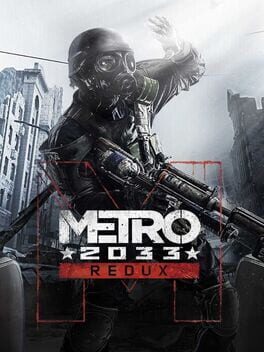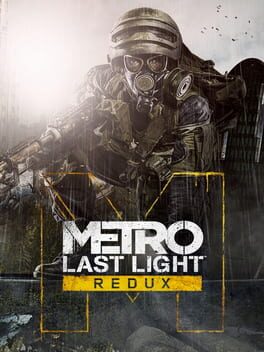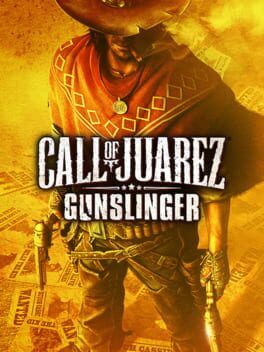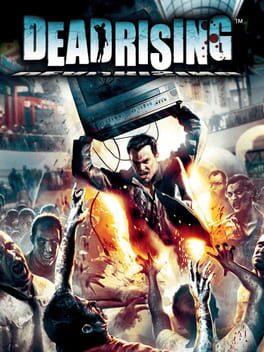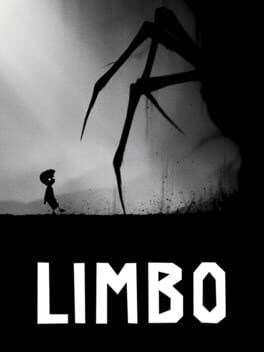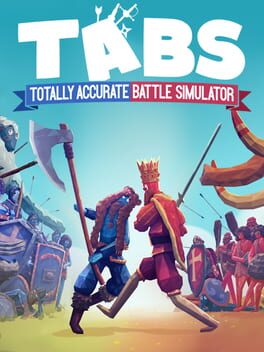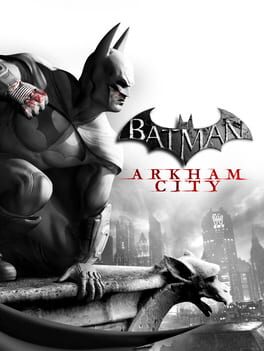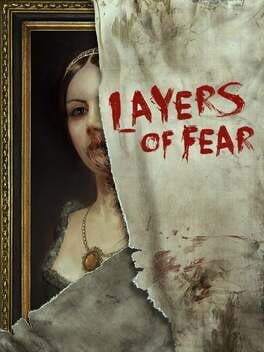Rezlo
BACKER
2014
Metro 2033 Redux is a grimdark, gearpunk FPS with a heavy emphasis on atmosphere and exploration. In it, you explore the nature of the Dark Ones, a foreign and mysterious group of questionable intent as you navigate the vast expanse of the metro, an underground Soviet subway system that refugees from the surface retreated to after an apparent World War III.
As the title suggests, the graphics also have a new coat of paint with this rendition, which especially shine on the surface portions of the game. While I've not yet played the original version of the game to compare, I can safely assume that this is one of the major success points of the redux.
To speak on the game’s triumphs more generally, I would say that Metro 2033 succeeds in three main aspects. As previously stated, the graphics (along with the music/ambience) allow the player to really buy into the grimy world of the metro while still keeping the game nice to look at. It also has a suitable selection of weapons, equipment, and pathways to meet your every need in taking on the natural and supernatural foes you encounter. Made even further better by its adherence to the makeshift aesthetic, such as can be seen in the Tihar, a pneumatic hand-pump air gun made from spare parts around the metro. Additionally, the equipment rationing and scavenge mechanics, like the gas mask filters in particular, are fun ways to add resource management in a way that makes sense while adding to the difficulty.
Of course, the story is no slouch either. Its expeditionary-like structure and journal entries work surprisingly well in adding to the tone and immersion, as well as providing ideal accommodations for any playstyle, be it stealth missions, hunker down defenses, or run-and-gun ops. Though most of the time it is up to you how you handle the situation. Conversely, the game’s weakest point, and only real problems are the somewhat frequent glitches and bugs. While I didn’t suffer any outright crashes, I did have to restart the game at a certain point because I was unable to progress. The good news is that they can be avoided or ignored pretty easily, so there’s that at least. All in all, I would definitely say give it a shot, it’s a fun shooter with a lot to admire.
As the title suggests, the graphics also have a new coat of paint with this rendition, which especially shine on the surface portions of the game. While I've not yet played the original version of the game to compare, I can safely assume that this is one of the major success points of the redux.
To speak on the game’s triumphs more generally, I would say that Metro 2033 succeeds in three main aspects. As previously stated, the graphics (along with the music/ambience) allow the player to really buy into the grimy world of the metro while still keeping the game nice to look at. It also has a suitable selection of weapons, equipment, and pathways to meet your every need in taking on the natural and supernatural foes you encounter. Made even further better by its adherence to the makeshift aesthetic, such as can be seen in the Tihar, a pneumatic hand-pump air gun made from spare parts around the metro. Additionally, the equipment rationing and scavenge mechanics, like the gas mask filters in particular, are fun ways to add resource management in a way that makes sense while adding to the difficulty.
Of course, the story is no slouch either. Its expeditionary-like structure and journal entries work surprisingly well in adding to the tone and immersion, as well as providing ideal accommodations for any playstyle, be it stealth missions, hunker down defenses, or run-and-gun ops. Though most of the time it is up to you how you handle the situation. Conversely, the game’s weakest point, and only real problems are the somewhat frequent glitches and bugs. While I didn’t suffer any outright crashes, I did have to restart the game at a certain point because I was unable to progress. The good news is that they can be avoided or ignored pretty easily, so there’s that at least. All in all, I would definitely say give it a shot, it’s a fun shooter with a lot to admire.
I have a lot less to say about this game compared to its predecessor, namely for the fact that not much has changed. Barring a new weapon or two and added claymores, the gameplay is pretty much identical to Metro 2033 Redux. In practically every area Last Light is essentially an extended DLC of the original. If you liked it before and were left yearning to see more of the world, Last Light is a no-brainer to pick up.
The story has a good increase in globetrotting and really helps flesh out the Metroverse, both above and below the scorched surface. With the exception of a few rushed character arcs and developments, the story was engaging and had me interested in where I was heading next.
The story has a good increase in globetrotting and really helps flesh out the Metroverse, both above and below the scorched surface. With the exception of a few rushed character arcs and developments, the story was engaging and had me interested in where I was heading next.
A wacky, simple, and satisfying western arcade shooter that doesn’t overstay its welcome. The soundtrack, weapon handling, and humorous elements add to its fast-paced, balls-to-the-wall nature. At the same time, the different upgrade paths add just enough variety to warrant an extra couple of playthroughs down the line. While the story is far from groundbreaking, it offers a unique little tale with some cheeky narrative devices afforded to it by the nature in which it’s told. Don’t expect anything too serious though, as it doesn’t shy away from poking fun at common tropes in Wild West media. It’s only around 4-5 hours, but I would say it’s well worth the purchase.
2013
This game feels just short of fully realized potential. One the one hand, I love the beginning setup. The asylum is literally coated in liquid macabre, and for a majority of the game, this status quo is maintained. Be it the sound design, the myriad of maniacs you encounter, your night vision video camera, or the sprawling asylum hell-maze, it can safely be said Outlast is a classic taste of horror, if a bit by-the-numbers. Unfortunately, I don’t think the final act could meet the expectations laid beforehand by the terrifying mini-bosses, and the exposition around the final boss' nature did nothing to increase terror or interest. The jump in threat level felt like a half-hearted attempt to increase the terror level. That disappointment, along with the sometimes-questionable enemy AI detection, are the most glaring issues in this overall decent horror experience.
2017
Long story short: For Honor is an exceedingly unique, extremely intense combat game that I would recommend to anyone who's a fan of fantasy, swordplay, and technical arena fighting.
Long story long: For Honor has a fairly steep learning curve. The good news is that at its most basic level, there is little move-type variety to learn. Like most other fighting games, there is a surprising level of simplicity in terms of overall attack choices. Where the game really starts is in the millisecond precision timings, max damage punishes, understanding how to approach different heroes, and how to best position/be a team player. If you’re willing to put in the time to practice practice practice then you WILL reap the rewards, and undoubtedly be satisfied doing so. With a roster of 29 heroes and counting, For Honor has a character for every archetypal playstyle, all made accessible with the easily obtainable in-game currency.
Regarding the Faction War, it functions as a great concept but ultimately can’t nail the execution phase. Implementing it as an outlet to fight for your chosen faction is a superb idea, but ultimately provides no meaningful interaction or rewards for the player. While a sequel is unlikely, one can only hope this idea gets more thought put into it eventually. Similarly, the campaign is fairly barebones and functions almost exclusively as a tutorial. Still, I commend the fact that it even has a campaign at all. Though maybe I just have a soft spot for the quaint little story.
Speaking as someone who is by no means a hardcore fighting game player, this game’s setting and captivatingly simple combat has had me hooked from launch. If you’re so much as even next to the metaphorical fence, I would highly suggest giving it a chance.
Long story long: For Honor has a fairly steep learning curve. The good news is that at its most basic level, there is little move-type variety to learn. Like most other fighting games, there is a surprising level of simplicity in terms of overall attack choices. Where the game really starts is in the millisecond precision timings, max damage punishes, understanding how to approach different heroes, and how to best position/be a team player. If you’re willing to put in the time to practice practice practice then you WILL reap the rewards, and undoubtedly be satisfied doing so. With a roster of 29 heroes and counting, For Honor has a character for every archetypal playstyle, all made accessible with the easily obtainable in-game currency.
Regarding the Faction War, it functions as a great concept but ultimately can’t nail the execution phase. Implementing it as an outlet to fight for your chosen faction is a superb idea, but ultimately provides no meaningful interaction or rewards for the player. While a sequel is unlikely, one can only hope this idea gets more thought put into it eventually. Similarly, the campaign is fairly barebones and functions almost exclusively as a tutorial. Still, I commend the fact that it even has a campaign at all. Though maybe I just have a soft spot for the quaint little story.
Speaking as someone who is by no means a hardcore fighting game player, this game’s setting and captivatingly simple combat has had me hooked from launch. If you’re so much as even next to the metaphorical fence, I would highly suggest giving it a chance.
2006
An absolutely novel game with a fantastic setting. This game is in my mind the perfect blend of goofy and gruesome, set against the backdrop of a middle-America mall. Truly the perfect zombie sandbox concept.
Of course, while not every interactable is made equally, there are so many delightfully pedestrian AND devilishly bizarre items, clothing, sights, and weapons to interact with in the various outlets that the game practically has a built-in replayability factor. Not to mention the multiple endings. The bosses are no exception to being exceptional either, as the “psychopaths” come in varieties of silly, hilarious, and terrifying, as well as all of the above at once. Despite this the tone still feels consistent because it never dwells on or overloads on the absurdity of the situation.
Now being the first game in the series, Dead Rising also sets a number of precedents such as using a real-time countdown system, along with a photography mechanic to expose the goings-on of the mall and its ilk. Personally, I find both to be welcome features, allowing for fast-paced momentum in addition to rewarding the player for mindful exploration. On top of that, the protagonist Frank West is a refreshing mix of a witty yet still oblivious journalist who really gives life to the story, while still making you root for him as an everyman.
Granted, the game is a bit antiquated in some areas. Like in the annoying manual save system, old-school aiming, and bad follower AI. The poor AI in particular feels like it discourages pushing your limits in rescuing as many survivors as possible by making it super tedious. Still, with some patience it’s doable. Nevertheless, Dead Rising’s highest highs are far more numerous than its lowest lows, making it a triumph for anyone who desires a fresh take on zombie games.
Of course, while not every interactable is made equally, there are so many delightfully pedestrian AND devilishly bizarre items, clothing, sights, and weapons to interact with in the various outlets that the game practically has a built-in replayability factor. Not to mention the multiple endings. The bosses are no exception to being exceptional either, as the “psychopaths” come in varieties of silly, hilarious, and terrifying, as well as all of the above at once. Despite this the tone still feels consistent because it never dwells on or overloads on the absurdity of the situation.
Now being the first game in the series, Dead Rising also sets a number of precedents such as using a real-time countdown system, along with a photography mechanic to expose the goings-on of the mall and its ilk. Personally, I find both to be welcome features, allowing for fast-paced momentum in addition to rewarding the player for mindful exploration. On top of that, the protagonist Frank West is a refreshing mix of a witty yet still oblivious journalist who really gives life to the story, while still making you root for him as an everyman.
Granted, the game is a bit antiquated in some areas. Like in the annoying manual save system, old-school aiming, and bad follower AI. The poor AI in particular feels like it discourages pushing your limits in rescuing as many survivors as possible by making it super tedious. Still, with some patience it’s doable. Nevertheless, Dead Rising’s highest highs are far more numerous than its lowest lows, making it a triumph for anyone who desires a fresh take on zombie games.
Arkham Asylum starts off strong by getting right into the action, and does so in an ideal intro to the Rocksteady Universe: by taking place in an asylum filled with a plethora of batman’s rogues gallery. In this, I feel the game particularly succeeds. It does a great job of making the world feel lived in, as well as whetting the villain appetite just enough to keep you wanting more. On top of that the whole place has this delightfully dreary mood that really hits home the theme of claustrophobic madness. Elevated by the fact that the story feels like a classic Batman story you’d see on a Saturday morning cartoon, as they even got Mark Hamill and Kevin Conroy to voice the fateful duo.
The combat is top-tier satisfaction, not unexpected coming from the Dark Knight, but don't expect any real difficulty or complexity. If you understand the basic controls the game is a cake-walk, so I’d recommend playing on the hardest difficulty even if you’re new. Additionally, most of the boss fights are sadly quite similar, with Ivy and especially Crane being the standouts in ingenuity.
Beyond the main story mode is a challenge mode, a nice distraction for whenever you want to sink a couple hours in the hectic combat mode or the more stealthy predator missions. Luckily, you have more than just your wits and fists to aid you, as both the challenge mode and the main story do well in providing a small yet versatile group of gadgets that can be used offensively and for traversal. Which is especially useful in completing the optional Riddler collect-a-thon, a side mission used to further reveal information about the batman mythos. That being said, while Arkham Asylum is a game complemented by a fondness for the caped crusader, its enjoyability extends far beyond the hardcore fans.
The combat is top-tier satisfaction, not unexpected coming from the Dark Knight, but don't expect any real difficulty or complexity. If you understand the basic controls the game is a cake-walk, so I’d recommend playing on the hardest difficulty even if you’re new. Additionally, most of the boss fights are sadly quite similar, with Ivy and especially Crane being the standouts in ingenuity.
Beyond the main story mode is a challenge mode, a nice distraction for whenever you want to sink a couple hours in the hectic combat mode or the more stealthy predator missions. Luckily, you have more than just your wits and fists to aid you, as both the challenge mode and the main story do well in providing a small yet versatile group of gadgets that can be used offensively and for traversal. Which is especially useful in completing the optional Riddler collect-a-thon, a side mission used to further reveal information about the batman mythos. That being said, while Arkham Asylum is a game complemented by a fondness for the caped crusader, its enjoyability extends far beyond the hardcore fans.
2010
Limbo is an extremely short minimalist puzzle-platformer that doesn’t take but a couple hours to beat. With Its film noir art style and sound design it’s equal parts creepy and serene, an aspect that I would opine justifies the game’s existence, if not as much as I’d like.
Beyond that, Limbo functions as a simple, standard platformer. It has a water section, an anti-gravity section, and the works. If that’s your fancy, you’re in luck. I’d only warn against expecting anything too inventive, as it’s more of an experience than a game. Limbo is best appreciated when you look at it as an interactive art piece. And don’t get me wrong, it’s a gorgeous art piece at that. The problem is that I don’t think Limbo does enough to hold your attention once the novelty of the aesthetics wears off. If all the sections were like the spider one I would likely rate this higher. It’s a fun time, it just has nothing crazy going on.
Beyond that, Limbo functions as a simple, standard platformer. It has a water section, an anti-gravity section, and the works. If that’s your fancy, you’re in luck. I’d only warn against expecting anything too inventive, as it’s more of an experience than a game. Limbo is best appreciated when you look at it as an interactive art piece. And don’t get me wrong, it’s a gorgeous art piece at that. The problem is that I don’t think Limbo does enough to hold your attention once the novelty of the aesthetics wears off. If all the sections were like the spider one I would likely rate this higher. It’s a fun time, it just has nothing crazy going on.
2008
First and foremost, I adore the vibe of Mirror’s Edge. Its ultra-vibrant environments and wind-kissed sound design is a real treat to the senses. Along with the iconic movement options of a seasoned parkour expert, Mirror’s Edge makes for a cozy seat in the driver’s side of a daredevil’s car.
As for the story, it wasn’t bad, just very predictable. If nothing else it at least justifies Faith’s running around with a believable reason. The only area of significant complaint is how finicky the game can be at times. For instance there were a few times where the objective marker didn’t work and I ended up at a dead end for a brief period, or times where enemies were a bit too obnoxious in their placement. In spite of that, I can’t come down on the game too hard. More than just an exhilarating parkour game, Mirror’s Edge is a cathartic breath of fresh air with its techno beats and rich colors. The kind of game that’s easy to lose yourself in every few years.
As for the story, it wasn’t bad, just very predictable. If nothing else it at least justifies Faith’s running around with a believable reason. The only area of significant complaint is how finicky the game can be at times. For instance there were a few times where the objective marker didn’t work and I ended up at a dead end for a brief period, or times where enemies were a bit too obnoxious in their placement. In spite of that, I can’t come down on the game too hard. More than just an exhilarating parkour game, Mirror’s Edge is a cathartic breath of fresh air with its techno beats and rich colors. The kind of game that’s easy to lose yourself in every few years.
An average joe’s simulator, and I mean that in a good way. Instead of gritty reimaginings of historic battles, TABS lets the user take control of a myriad of silly, mystical, and pop-culture factions. All with the dopey googly eyes to match its laid-back cartoony nature.
TABS’ accessibility, along with its infinitely moderate entertainment value, are the main draws of the game. Its campaigns, secret troops, unit-creator, and ability to face your friends on the battlefield also gives you something to do should you get tired of building both teams yourself, or just want a challenge. Coming from someone who enjoys sandbox tinkering, TABS feels like an enjoyable middle-ground between effort and relaxation, especially with other players. Though admittedly, an extra focus on depth and variability in maps would go a long way for the game.
In case the title wasn’t warning enough, In no way is TABS meant to be taken too seriously. The jank alone is enough to hammer in that fact. Far and away the game’s biggest problem is its susceptibility to glitches. They’re never game-breaking, but prepare to have to reset a battle sometimes because a troop or two got stuck or is tripping over themselves ad infinitum. In fairness, some modicum of jank is to be expected with any battle simulator, but I feel it happens too often to be ignored. And even with it being a natural consequence of terrain and troop variability that can’t always be accounted for, it’s worth noting in contrast to an otherwise solid game.
TABS’ accessibility, along with its infinitely moderate entertainment value, are the main draws of the game. Its campaigns, secret troops, unit-creator, and ability to face your friends on the battlefield also gives you something to do should you get tired of building both teams yourself, or just want a challenge. Coming from someone who enjoys sandbox tinkering, TABS feels like an enjoyable middle-ground between effort and relaxation, especially with other players. Though admittedly, an extra focus on depth and variability in maps would go a long way for the game.
In case the title wasn’t warning enough, In no way is TABS meant to be taken too seriously. The jank alone is enough to hammer in that fact. Far and away the game’s biggest problem is its susceptibility to glitches. They’re never game-breaking, but prepare to have to reset a battle sometimes because a troop or two got stuck or is tripping over themselves ad infinitum. In fairness, some modicum of jank is to be expected with any battle simulator, but I feel it happens too often to be ignored. And even with it being a natural consequence of terrain and troop variability that can’t always be accounted for, it’s worth noting in contrast to an otherwise solid game.
Shadow of Mordor is a fantastical hack and slash in the LOTR-verse. From a LOTR outsider’s perspective the story felt as creatively safe as possible. I’m sure someone else could speak more intelligently on it, but really it’s a revenge story when you get down to brass tacks. And that easily digestible setup, along with the viscerally brutal combat were enough to keep me invested for the full ride.
Speaking of, the combat takes full inspiration from Rocksteady’s Batman games, with an added lethal brutality that Batman could never get away with. Your main weapons are your sword for outright fights, your bow for ranged takedowns, and your dagger for stealth encounters. Each weapon can be modified by acquiring runes, which grant special abilities based on the rarity and description of the rune. These modifiers, along with the ability trees, work wonderfully to make you feel like you’re becoming a bigger badass as the game goes on. No ability feels shoe-horned in for the sake of providing filler content. Most actually build upon the foundation of previous moves instead of providing a new move only usable in niche situations.
Make no mistake though, the prize pig of the game is the Nemesis System. A feature that allows for unique experiences with enemies in which they will remember previous interactions with you, possess unique weaknesses and strengths, be promotable, brandable (essentially making them work for you), and able to be assassinated and threatened. Keep in mind too the hierarchy of rank can change in real time and entirely separate from the player’s involvement. All things considered it’s a superbly neat spin on the typical organization of enemy hordes.
As for my lamentation, it is one of overinvestment. The combat features are swell, but they only go so far for so long before they too become repetitive. I wish there was more to see and do in the world. While the story demands you play on an Uruk wasteland, it can feel excessively barren in a way I don't think was intended. Perhaps some sort of outpost liberation mechanic or dynamic world changes would have given it more life.
Speaking of, the combat takes full inspiration from Rocksteady’s Batman games, with an added lethal brutality that Batman could never get away with. Your main weapons are your sword for outright fights, your bow for ranged takedowns, and your dagger for stealth encounters. Each weapon can be modified by acquiring runes, which grant special abilities based on the rarity and description of the rune. These modifiers, along with the ability trees, work wonderfully to make you feel like you’re becoming a bigger badass as the game goes on. No ability feels shoe-horned in for the sake of providing filler content. Most actually build upon the foundation of previous moves instead of providing a new move only usable in niche situations.
Make no mistake though, the prize pig of the game is the Nemesis System. A feature that allows for unique experiences with enemies in which they will remember previous interactions with you, possess unique weaknesses and strengths, be promotable, brandable (essentially making them work for you), and able to be assassinated and threatened. Keep in mind too the hierarchy of rank can change in real time and entirely separate from the player’s involvement. All things considered it’s a superbly neat spin on the typical organization of enemy hordes.
As for my lamentation, it is one of overinvestment. The combat features are swell, but they only go so far for so long before they too become repetitive. I wish there was more to see and do in the world. While the story demands you play on an Uruk wasteland, it can feel excessively barren in a way I don't think was intended. Perhaps some sort of outpost liberation mechanic or dynamic world changes would have given it more life.
2011
The Bat is back and broodier than ever in this upscaled addition to the Rocksteady canon. Naturally, this means doubling down on the combat, gadgets, side-missions, and the world itself. Before I go into detail, does Arkham City prove itself a worthy sequel to the legacy of Arkham Asylum? 100%, and in many ways surpasses it.
The story is grand, engaging, and packed full of iconic Batman rogues, all underlit by an absolutely chilling operatic theme. Without spoiling too much, it does a marvelous job at elevating the stakes and action, with multiple factions vying for control of the isolated Arkham City. With the exception of Hugo Strange, Catwoman, and Robin being underutilized, it was a fantastic story that really expanded on the Batman mythos. Speaking of, Batman himself is definitely more moody this time around, but beside the fact that he’s the Dark Knight, there’s a good reason for his grumpiness here.
In Arkham City, you’re working with a much bigger playground than before, which feels like the perfect size. Landmarks are clear and gliding has been made more involved and practical for travel, making it a blast to coast around the city. What’s more, the various side missions are short, sweet treats that put the spotlight on the lesser featured villains. Sure, some missions are a bit less deep than I’d like, but it was cool to see so many new and returning faces.
Most noticeable of all, the combat has been greatly expanded, both for and against you. But don’t be mistaken, the game is still heavily in your favor. The special moves and gadgets make going through this entry a relative breeze. Like Arkham Asylum, City is easy if you know what you’re doing. To me, the draw of Rocksteady combat (beside the animations) has always been trying to build the biggest combo using the largest variety of special moves. And with challenge mode being back and bigger than ever, allowing you to now play Catwoman, Robin, and Nightwing, there’s no shortage of opportunities to lay the hurt on some unsuspecting mooks. This extends to the breakout boss fights like Mr. Freeze as well, which really emphasizes thinking outside the box.
The story is grand, engaging, and packed full of iconic Batman rogues, all underlit by an absolutely chilling operatic theme. Without spoiling too much, it does a marvelous job at elevating the stakes and action, with multiple factions vying for control of the isolated Arkham City. With the exception of Hugo Strange, Catwoman, and Robin being underutilized, it was a fantastic story that really expanded on the Batman mythos. Speaking of, Batman himself is definitely more moody this time around, but beside the fact that he’s the Dark Knight, there’s a good reason for his grumpiness here.
In Arkham City, you’re working with a much bigger playground than before, which feels like the perfect size. Landmarks are clear and gliding has been made more involved and practical for travel, making it a blast to coast around the city. What’s more, the various side missions are short, sweet treats that put the spotlight on the lesser featured villains. Sure, some missions are a bit less deep than I’d like, but it was cool to see so many new and returning faces.
Most noticeable of all, the combat has been greatly expanded, both for and against you. But don’t be mistaken, the game is still heavily in your favor. The special moves and gadgets make going through this entry a relative breeze. Like Arkham Asylum, City is easy if you know what you’re doing. To me, the draw of Rocksteady combat (beside the animations) has always been trying to build the biggest combo using the largest variety of special moves. And with challenge mode being back and bigger than ever, allowing you to now play Catwoman, Robin, and Nightwing, there’s no shortage of opportunities to lay the hurt on some unsuspecting mooks. This extends to the breakout boss fights like Mr. Freeze as well, which really emphasizes thinking outside the box.
The Infinity War of the PS2 generation, Marvel Ultimate Alliance is one of the few action RPGs that can hold my attention. Seeing as it was my first introduction to the genre and the greater Marvel Universe, it also holds a special place in my heart.
The opportunity to see so many superheroes and villains come together to fight is pure wish-fulfillment. To go along with that the story is super simple. All you need to know is that Doctor Doom is amassing a group of supervillains to take over the universe, and you must stop him with the help of various brawlers and brainiacs. It’s very much a child-friendly exposition adventure meant to showcase the many faces of Marvel, but it’s easily followable by anyone unfamiliar with the world. For existing fans, seeing the unique dialogues, locations, cinematics, side objectives, and classic outfits are rewards in and of themselves.
Good as the game is, it’s no trailblazer. You got your radial attacks, buffs, melees, and so forth. Where Ultimate Alliance really shines is seeing that synergy play out with a coordinated team or performing combined ultimates and combo abilities with nods to the comics like the fastball special. Not to say it doesn’t stand on its own merits, but it’s definitely a game enhanced by knowledge and interest in the franchise to begin with. The difficulty is par for the course with the exception of one or two bosses, but I do wish there weren't so many insta-death dangers. Thankfully, there's some cheat codes to make the game less grindy, which is nice if you don’t want to wait for abilities, characters, and outfits.
The opportunity to see so many superheroes and villains come together to fight is pure wish-fulfillment. To go along with that the story is super simple. All you need to know is that Doctor Doom is amassing a group of supervillains to take over the universe, and you must stop him with the help of various brawlers and brainiacs. It’s very much a child-friendly exposition adventure meant to showcase the many faces of Marvel, but it’s easily followable by anyone unfamiliar with the world. For existing fans, seeing the unique dialogues, locations, cinematics, side objectives, and classic outfits are rewards in and of themselves.
Good as the game is, it’s no trailblazer. You got your radial attacks, buffs, melees, and so forth. Where Ultimate Alliance really shines is seeing that synergy play out with a coordinated team or performing combined ultimates and combo abilities with nods to the comics like the fastball special. Not to say it doesn’t stand on its own merits, but it’s definitely a game enhanced by knowledge and interest in the franchise to begin with. The difficulty is par for the course with the exception of one or two bosses, but I do wish there weren't so many insta-death dangers. Thankfully, there's some cheat codes to make the game less grindy, which is nice if you don’t want to wait for abilities, characters, and outfits.
2016
A great example of the principle that looks aren’t everything. When you peel back the layers of shine and fluff of the game, you’ll find a mechanically and narratively shallow framework that brings little to the table. This, along with the overly repetitive nature of the game makes Layers of Fear a slog to go through.
To start with, Layers puts almost the whole story on the table within the first ten minutes of the game. The remaining bit you can parse out long before the actual game tells you. Unfortunately, the rest of the time isn’t used effectively either, as you’ll spend it endlessly opening doors to be jumpscared by an item falling, a woman approaching, etc. Jumpscares are fine but this game hands them out like candy. Moreover, Layers feels overindulgent of itself, a trait wholly unearned and a tad ironic given the emphasis on the tortured artist aesthetic.
Instead of focusing excessively on trippy visuals, Layers of Fear should have tried to create a more unique story told via more engaging means. That’s not to say the game needed to be action oriented, but the refusal to commit to a single cohesive genre faithfully holds this horror entry back from being anything more than a pretty window display fit for a tech demo.
To start with, Layers puts almost the whole story on the table within the first ten minutes of the game. The remaining bit you can parse out long before the actual game tells you. Unfortunately, the rest of the time isn’t used effectively either, as you’ll spend it endlessly opening doors to be jumpscared by an item falling, a woman approaching, etc. Jumpscares are fine but this game hands them out like candy. Moreover, Layers feels overindulgent of itself, a trait wholly unearned and a tad ironic given the emphasis on the tortured artist aesthetic.
Instead of focusing excessively on trippy visuals, Layers of Fear should have tried to create a more unique story told via more engaging means. That’s not to say the game needed to be action oriented, but the refusal to commit to a single cohesive genre faithfully holds this horror entry back from being anything more than a pretty window display fit for a tech demo.
2011
As much as I wanted to like Homefront, I can’t help but lament its inability to overcome its shortcomings. On the whole, Homefront struggles to differentiate itself from the generic shooter template enough to make a lasting impression.
The red dawn-like setup is a neat idea that’s not been done a lot and it’s regretfully squandered here on an execution too safe and boring for its own good. I can commend the radio transmissions between missions for adding context, and the small peaks into the direness of occupied America can be moving, but it’s all undercut by a cliche cast of characters and a protagonist that may as well be a cardboard cutout. Where Homefront shines is in isolated scenes, both grand and grisly, but those moments are too sparse to keep the player engaged. Not to mention the story ends far too abruptly and with absolutely no punch.
As for the gameplay, Homefront never rises above basic competency. Most of the guns are forgettable, with the exceptions of the special guns like the launchers and snipers. The vehicle control sections are fine, even if they feel more like a met quota than a fun purposeful choice. Beyond some rudimentary grenades and rarely C4, that about does it for your arsenal. Again, while the groundwork exists for something experimental here, Homefront disappointingly insists on offering nothing new, even as a gimmick.
The red dawn-like setup is a neat idea that’s not been done a lot and it’s regretfully squandered here on an execution too safe and boring for its own good. I can commend the radio transmissions between missions for adding context, and the small peaks into the direness of occupied America can be moving, but it’s all undercut by a cliche cast of characters and a protagonist that may as well be a cardboard cutout. Where Homefront shines is in isolated scenes, both grand and grisly, but those moments are too sparse to keep the player engaged. Not to mention the story ends far too abruptly and with absolutely no punch.
As for the gameplay, Homefront never rises above basic competency. Most of the guns are forgettable, with the exceptions of the special guns like the launchers and snipers. The vehicle control sections are fine, even if they feel more like a met quota than a fun purposeful choice. Beyond some rudimentary grenades and rarely C4, that about does it for your arsenal. Again, while the groundwork exists for something experimental here, Homefront disappointingly insists on offering nothing new, even as a gimmick.
